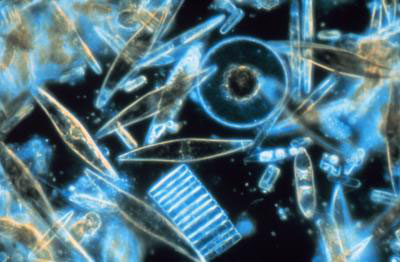| Posted: September 8, 2008 |
Proteins from marine diatoms hold vast potential for improved antibiotics |
|
(Nanowerk News) Researchers in Florida are reporting an advance toward tapping the enormous potential of an emerging new group of antibiotics identical to certain germ-fighting proteins found in the human immune system. Their study, which may help fight the growing epidemic of drug-resistant infections, is in the current (August) issue of ACS' Biomacromolecules ("Synthesis of Bioinorganic Antimicrobial Peptide Nanoparticles with Potential Therapeutic Properties").
|
 |
| Researchers report a step toward development of a new type of antibiotic using proteins from marine diatoms. The above diatoms were living between crystals of sea ice in McMurdo Sound, Antarctica. (Image: NOAA)
|
|
In the new study, D. Matthew Eby, Glenn Johnson, and Karen Farrington point out that scientists have long eyed the germ-fighting potential of antimicrobial peptides (AMPs). These small proteins fight a wide range of bacteria and fungi in the body and have the potential to be developed into powerful drugs to overcome infections that are resistant to conventional drugs. But scientists report difficulty producing effective AMPs because the antibiotics are fragile and easily destroyed in the body. An effective way to stabilize them is needed, they say.
In laboratory studies, the researchers showed that the coating protected the antibiotics from destruction by other chemicals while allowing the release of a controlled antibiotic dose for an extended period of time. These features are key to the effective use of AMPs as antibiotics, they say.
|

